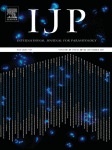Ver ítem
- xmlui.general.dspace_homeCentros e Institutos de InvestigaciónCICVyA. Centro de Investigación en Ciencias Veterinarias y AgronómicasInstituto de BiotecnologíaArtículos científicosxmlui.ArtifactBrowser.ItemViewer.trail
- Inicio
- Centros e Institutos de Investigación
- CICVyA. Centro de Investigación en Ciencias Veterinarias y Agronómicas
- Instituto de Biotecnología
- Artículos científicos
- Ver ítem
MicroRNA analysis of Taenia crassiceps cysticerci under praziquantel treatment and genome-wide identification of Taenia solium miRNAs
Resumen
MicroRNAs (miRNAs) are small non-coding RNAs that have emerged as important regulators of gene expression and perform critical functions in development and disease. In spite of the increased interest in miRNAs from helminth parasites, no information is available on miRNAs from Taenia solium, the causative agent of cysticercosis, a neglected disease affecting millions of people worldwide. Here we performed a comprehensive analysis of miRNAs from Taenia
[ver mas...]
MicroRNAs (miRNAs) are small non-coding RNAs that have emerged as important regulators of gene expression and perform critical functions in development and disease. In spite of the increased interest in miRNAs from helminth parasites, no information is available on miRNAs from Taenia solium, the causative agent of cysticercosis, a neglected disease affecting millions of people worldwide. Here we performed a comprehensive analysis of miRNAs from Taenia crassiceps, a laboratory model for T. solium studies, and identified miRNAs in the T. solium genome. Moreover, we analysed the effect of praziquantel, one of the two main drugs used for cysticercosis treatment, on the miRNA expression profile of T. crassiceps cysticerci. Using small RNA-seq and two independent algorithms for miRNA prediction, as well as northern blot validation, we found transcriptional evidence of 39 miRNA loci in T. crassiceps. Since miRNAs were mapped to the T. solium genome, these miRNAs are considered common to both parasites.
The miRNA expression profile of T. crassiceps was biased to the same set of highly expressed miRNAs reported in other cestodes. We found a significant altered expression of miR-7b under praziquantel treatment.
In addition, we searched for miRNAs predicted to target genes related to drug response. We performed a detailed target prediction for miR-7b and found genes related to drug action. We report an initial approach to study the effect of sub-lethal drug treatment on miRNA expression in a cestode parasite, which provides a platform for further studies of miRNA involvement in drug effects. The results of our work could be applied to drug development and provide basic knowledge of cysticercosis and other neglected helminth infections.
[Cerrar]

Fuente
International journal for parasitology 47 (10–11) : 643-653 (September 2017)
Fecha
2017-09
ISSN
0020-7519 (Print)
1879-0135 (Online)
1879-0135 (Online)
Formato
pdf
Tipo de documento
article
Palabras Claves
Derechos de acceso
Restringido
 Excepto donde se diga explicitamente, este item se publica bajo la siguiente descripción: Creative Commons Attribution-NonCommercial-ShareAlike 2.5 Unported (CC BY-NC-SA 2.5)
Excepto donde se diga explicitamente, este item se publica bajo la siguiente descripción: Creative Commons Attribution-NonCommercial-ShareAlike 2.5 Unported (CC BY-NC-SA 2.5)

